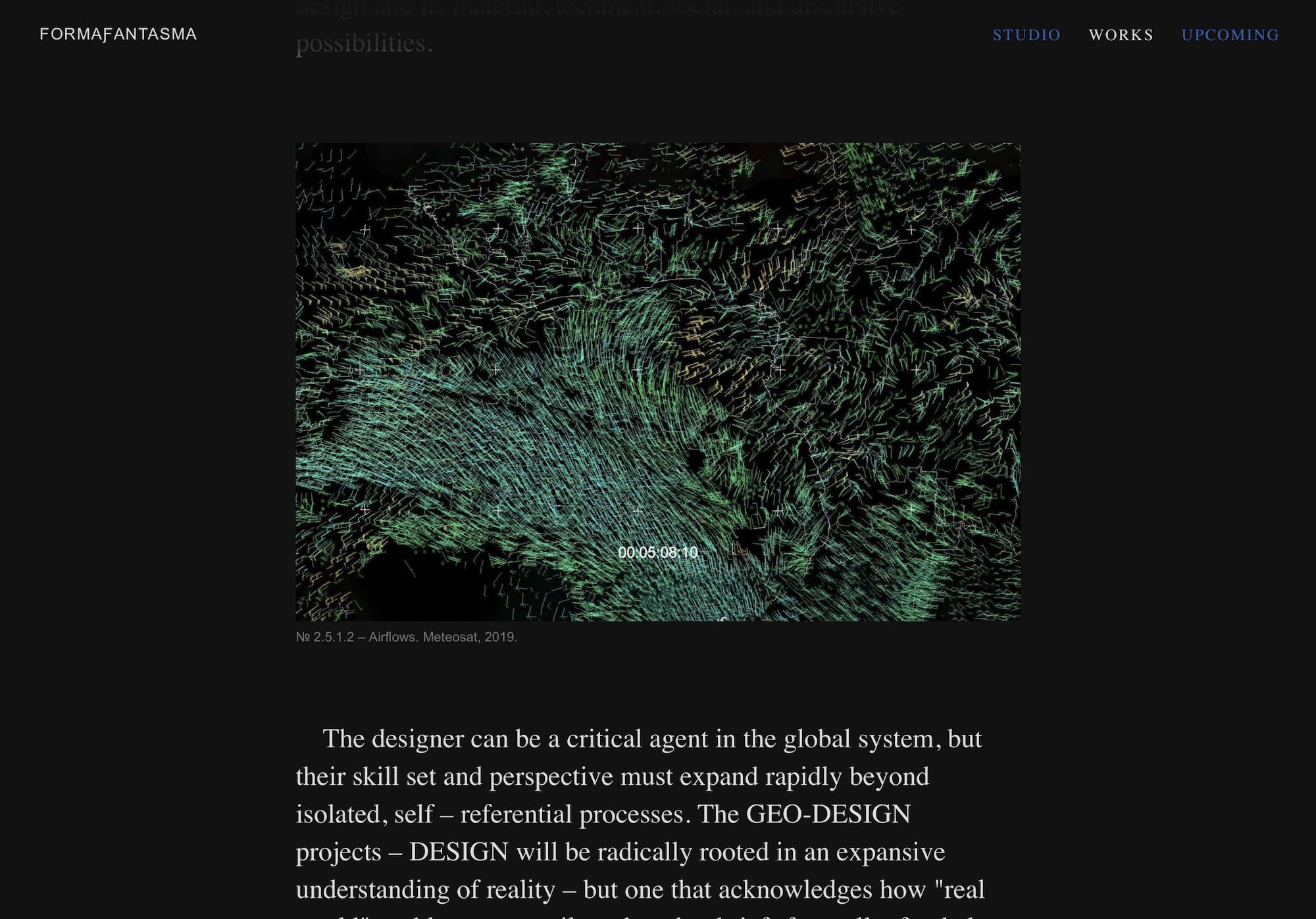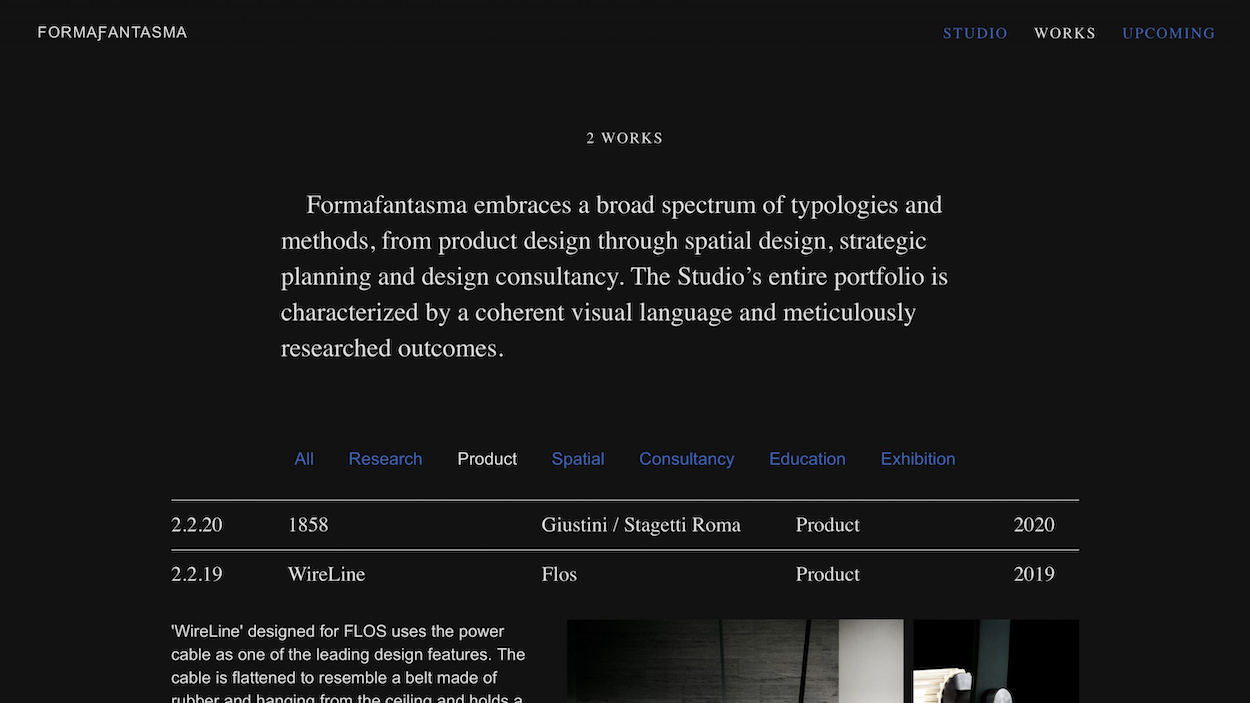The internet consumes enormous amounts of energy; in fact, it’s the world’s fastest-growing carbon-emitting industry and will soon eclipse all other industries in terms of worldwide pollution. According to GreenGeeks, the growing number of data centers that host web servers currently accounts for two percent of global carbon emissions—a number that’s expected to rise to 14 percent by 2040. Recent studies show that Bitcoin is consuming more energy than Argentina, a country of 45 million people, and residents of Chandler, Arizona, were recently galvanized into action after incessant noise from data centers upended everyday life.
Concerned with these revelations, Formafantasma embarked on a total overhaul of its website to reduce its carbon emissions. The Italian design studio, led by Andrea Trimarchi and Simone Farresin, enlisted the like-minded firm Studio Blanco to create a new website that features small images, basic typefaces like Arial and Times New Roman that avoid unnecessary HTTP requests, and a pared-back logo created from standard Unicode symbols—features that require less energy to load on computers and smartphones. Visitors can also toggle between light and dark mode, which reduces energy consumption on devices that often use bright OLED screens.


